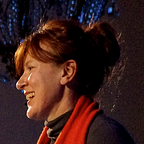Birds!
Birds are all around us. We watch birds. We feed birds. We slap pictures of birds on every conceivable object. There’s just something about birds. We love our feathery dinosaur friends.
But a lot of human activity isn’t so great for the birds, so they need our help.
The National Audubon Society has been doing it for the birds since 1905. In addition to their historic core mission of protecting birds and their habitats, Audubon offers something for everyone: art, science, education, recreation, and advocacy — even outstanding wedding locations — and of course, adorable photos of owls. Over time the organization has grown into a sprawling network of state offices, nature centers and sanctuaries, and hundreds of independent local chapters. Even at the national level, there were two separate websites, one for the editorial content from the Audubon Magazine, and one for the organization itself.
Under new leadership, and with a bold, clear conservation strategy in place, Audubon was ready to overhaul their online communication. The Mule Design team worked with them to design one interconnected system, uniting the passion and effectiveness of the grassroots with an ambitious vision. Our goal was to create a single glorious unified bird-loving national website, with a set of standards capable of supporting and interrelating the diversity of local communication needs.
“You guys really did a damn fine job. People are HAPPY.” — John Mahoney, Audubon Digital Director
Our Approach
We began by understanding the organization. We talked to representatives of every department, in New York and Washington DC, as well as in our own backyard. We visited the Richardson Bay Audubon Center and Wildlife Sanctuary in Marin County. We went on a birding adventure in the Baylands Nature Preserve just behind the Googleplex. Without appreciating the operational complexity and embracing the love of birds, our work would not be possible.
Then we talked to the audiences Audubon hoped to reach and inspire: current members, hard-core birders, younger urbanites with outdoorsy aspirations, and people who liked birds, but didn’t necessarily like like them.
And we dug through the great troves of resources at our disposal, photos, illustrations, interactive maps, relationships with the very best nature photographers. So much was going unused or underrepresented. All of this was a fantastic collaborative journey with the Audubon team. It was imperative that our high-flying design ideas find a place to land in operational reality, well within the capacity of Audubon resources.
Above all the new site is designed to display big beautiful photos of birds, and the habitats we share with them, and the people working to save them, and living alongside them.
The original illustrations by John James Audubon, the organization’s namesake, are now offered as a free high-resolution download. We designed “bird cards” around David Sibley’s iconic field guide illustrations to introduce each type of bird wherever it is mentioned and link to a page in the field guide. Most cards also play the bird’s call.
The new online Field Guide to north American Birds offers brilliant photographs by amateur bird lovers and professional photographers — including winners of the annual Audubon Society photography contest along with clear information.
We looked for ways to make Audubon feel as personal to the new visitor as to the longstanding member. This started with the flyways, the migratory pathways birds travel each year over immense distances. Flyways are at the heart of the new conservation strategy. All of us in North America live in one, so why not give people a bird’s eye view of their own home. The site detects each visitor’s location and displays their flyway.
And of course the site is delightfully responsive.
Results
The site just launched a few days ago, but so far the results are fantastic. According to Audubon, Twitter impressions doubled 10 days after launch, compared with the 10 days prior. The number of unique page views was up 25%, and the average amount of time visitors spent on the site jumped 70%. So far, online donations are up 16% over the previous February. And four times as many people are springing for that lifelike plush and making a symbolic bird adoption.
Now that the national organization has taken flight, Audubon is turning towards migrating the state and center sites onto the new platform. They are off to a fantastic start with the new system and we are excited to see what’s to come.
Originally published at muledesign.com.
